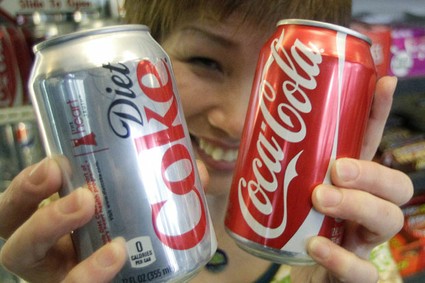
The first courtroom arguments in the closely watched case ended without an immediate ruling. Opponents said they planned to ask a judge to delay enforcement during the suit, which has broached questions of racial fairness alongside arguments about government authority and burdens to business.
The NAACP’s New York state branch and a network of Hispanic groups have joined a legal effort to block the first-of-its-kind restriction, igniting questions Wednesday about the groups’ ties to the beverage industry.
Beverage makers, restaurateurs, minority advocates and other critics told a judge the upcoming 16-ounce limit was a finger-wagging incursion on consumer choice, rife with inconsistencies that would cost a hot dog vendor business while still allowing New Yorkers to buy belly-buster sodas at the chain convenience store next to him. Opponents’ lawyers called it “ham-handed,” “grossly unfair” and just “plain silly.”
“New Yorkers do not want to be told what to drink,” attorney James Brandt said.
City lawyers acknowledged the rule’s limitations. It doesn’t apply to all high-calorie drinks or all places that sell them, largely because of the city can regulate only some establishments. But it’s still a reasonable and needed move to take on the city’s growing weight problem and the diseases linked to it, they said.
“While this may not be a silver bullet that will cure the obesity epidemic, it’s rational … (and) one step that can be taken,” said the city Health Department’s chief lawyer, Thomas Merrill.
The suit, filed by the American Beverage Association and others, seeks to block the restriction, set to take effect March 12. With no immediate ruling Wednesday, opponents said they planned to ask state Supreme Court Justice Milton Tingling to put it on hold until the case is decided. The city will oppose such a move, Merrill said after the hearing.
The latest in a line of healthy-eating initiatives during Mayor Michael Bloomberg’s administration, the beverage rule bars restaurants and many other eateries from selling high-sugar drinks in cups or containers bigger than 16 ounces. Violations could bring $200 fines; the city doesn’t plan to start seeking those until June.
In explaining the cola crackdown, officials cite the city’s rising obesity rate – about 24 percent of adults, up from 18 percent in 2002 – and point to studies linking sugary drinks to weight gain. Care for obesity-related illnesses costs more than $4.7 billion a year citywide, and government programs pay about 60 percent of that, according to city Health Commissioner Dr. Thomas Farley.
Opponents portray the regulation as government nagging that scapegoats sugary drinks for a multifaceted fat problem, and they say the restriction is unfairly narrow.
Unsweetened juice and milk-based drinks are excluded; health officials say they have nutritional value. The regulation also doesn’t cover alcoholic drinks or sales at supermarkets and many convenience stores – among them 7-Eleven, home of the Big Gulp – because they aren’t subject to city health rules.
The NAACP and the Hispanic Federation, an organization of 100 Northeastern groups, say their concern is that minority-owned delis and corner stores will end up at a disadvantage compared with grocery chains.
It’s a complaint voiced behind deli counters in heavily Hispanic East Harlem, where managers such as Yolanda Peralta see the restriction as inequitable.
“We’re paying taxes like every other store. … We should have the same rights that everybody else,” Peralta said Wednesday.
But others questioned the advocacy groups’ links to the soda companies whose fight they’ve joined. Among the ties:
– Coca-Cola announced last month it was giving a $100,000 grant to the national NAACP to support a healthy-lifestyles program
– PepsiCo gave the group more than $10,000 in 2010, according to the soda maker’s website.
– Former Hispanic Federation President Lillian Rodriguez Lopez left for a job at Coca-Cola in in February.
– The groups were represented Wednesday by a firm that also has represented Coca-Cola. The firm, King & Spalding, is representing the advocacy groups for free, lawyer Ann M. Cook said.
Given that obesity rates are higher than average among blacks and Hispanics, the NAACP should refuse soda makers’ money and “reevaluate the position the group is taking in New York City,” Michael F. Jacobson, the executive director of the nutrition advocacy group Center for Science in the Public Interest, said in a statement Wednesday.
He and Stan Glantz, director of the Center for Tobacco Control Research and Education at the University of California, San Francisco, noted that tobacco companies’ established relationship with African-American leadership organizations in decades past.
The strategy in the soda fight is “straight out of tobacco,” Glantz said.
Hazel Dukes, the NAACP’s New York president, bristled at the idea that the nearly 104-year-old group was swayed by the soda industry’s support.
“No one buys the NAACP,” she said in a telephone interview, noting that foundations also have contributed to the organization’s obesity-fighting initiatives.
Soda makers’ money “is not the issue here,” she said. “The issue is fairness.”
Beverage Industry, NYC Lawyers Duel Over Drinks.










